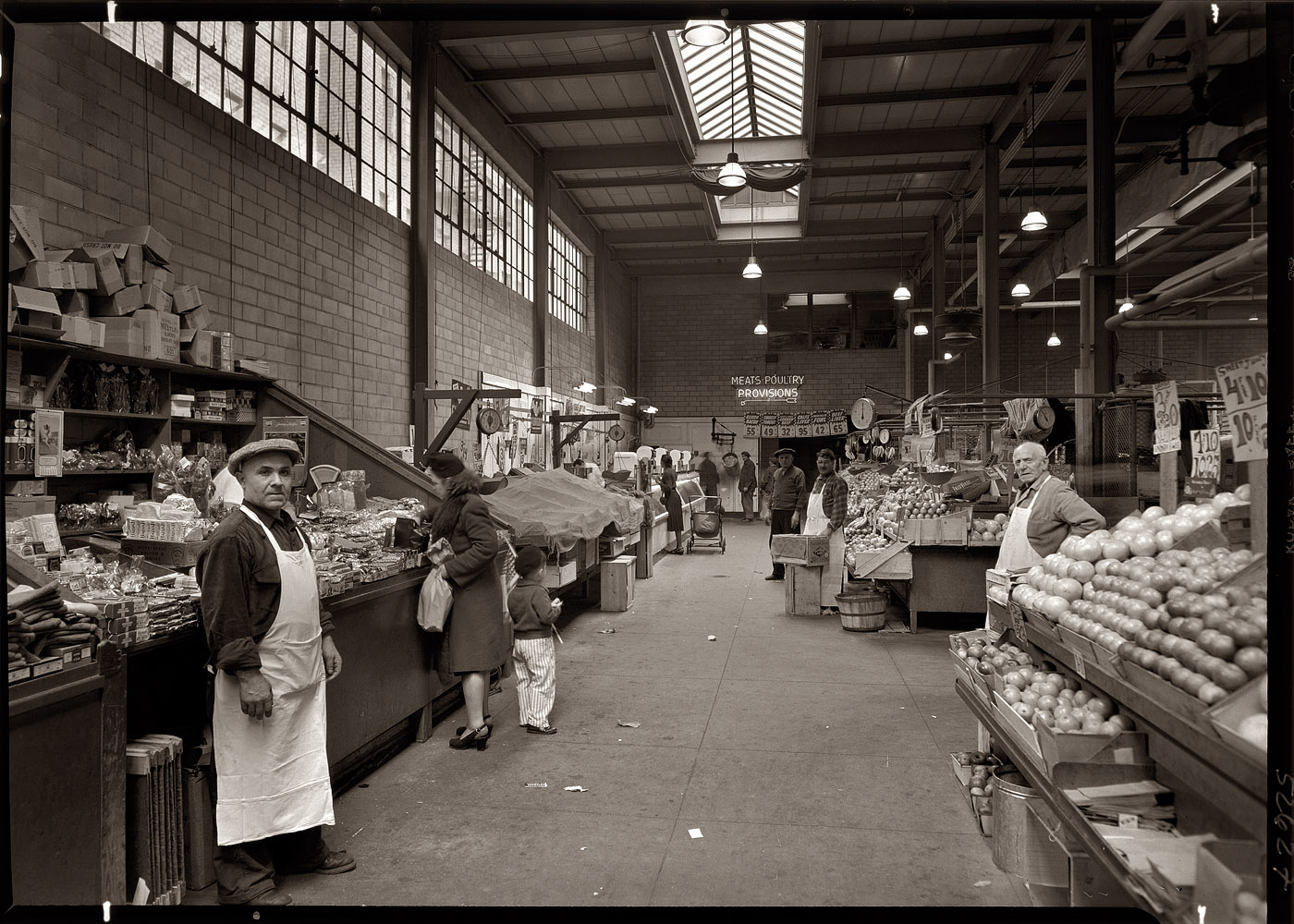
March 22, 1948. The New York City Public Market at First Avenue and East 73rd Street (?), an example of the food market in transition. A typical 19th-century market would have many separate vendors in an open-air space like a town square. By the early 1900s the open-air space had given way to separate vendors under a large shed roof with no walls, often near the train station. Here in 1948 the space is enclosed, but still with separate vendors (greengrocer, butcher, dry goods, fishmonger etc.). After the introduction of centralized distribution and self-service for the various product categories, the individual vendors fade from the scene and the market has a new name: "super-market," now spelled without the hyphen. 5x7 safety negative by Gottscho-Schleisner. | Click image for Comments. | Home | Browse All Photos